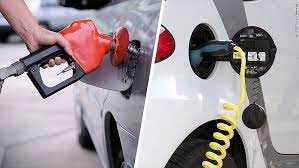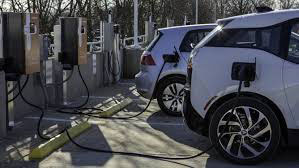Electric Vehicles’ Rising Star is a Strong Demand Driver for Copper
September 25, 2018
As I’ve mentioned before, the world-wide proliferation of electric vehicles (EVs) is creating new demand for copper.
On average, full-electric vehicles and plug-in hybrids require about 3.6 times the amount of copper than an internal combustion engine (ICE).
In the quest for further range and longer battery life, copper usage is increasing in step with battery size. On average, the copper content in a full-electric sports utility vehicle amounts to about 100kg and in an e-bus, copper content rises to about 300kg.
But while EVs represent a fast-growing segment for copper, it’s important to remember that gas-powered vehicles will continue to be with us for a long time to come and they also require considerable copper: on average around 23kg per vehicle.
 That 23kg per ICE vehicle currently represents about 7% of copper demand and analysts forecast sales growth of just more than 10% by 2025, compared with 2017. In other words, both our incumbent and our replacement means of transportation are growing – and they both need copper.
That 23kg per ICE vehicle currently represents about 7% of copper demand and analysts forecast sales growth of just more than 10% by 2025, compared with 2017. In other words, both our incumbent and our replacement means of transportation are growing – and they both need copper.
Global EV penetration rates are rising, with the total volume estimated to top two million in 2018, compared with sales of 1.1 million in 2017. By 2025, EVs are expected to account for about 12% of all vehicles on the road, or about 13.2 million units. One in four cars sold that year in China is expected to be an EV.
While estimates vary, the total demand from EVs alone by 2025 is estimated to be 3.32 million tonnes of copper.
To be clear, that 3.32 million tonnes is just to make EVs. It does not take into account the required charging infrastructure that needs to be built.
 Let’s review a couple of the figures involved.
Let’s review a couple of the figures involved.
- In North America, EV charging infrastructure is expected to require investment of about $18.6 billion by 2030.
- China’s spending on EV charging infrastructure could reach up to $43 Billion by 2020 (Bloomberg New Energy Finance)
- As many as 40 million charging points are anticipated globally by 2030 (GTM Research). Figures released by the International Copper Association show this will require an added 100,000t of copper per year by 2027.
What does this mean? Well for copper it points to strengthening fundamentals against a backdrop of stagnating production. For Nevada Copper it highlights the distinct timing advantage we enjoy… an advantage we are seeking to maximise as construction moves ahead on time and on budget and leading to production in 2019.
If you’ve not already done so, please sign up to our subscriber list to receive our news alerts. I would also encourage you to watch our corporate video and, should you have any questions, don’t hesitate to reach out to us.
Matt Gili, President and CEO Nevada Copper
